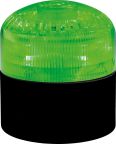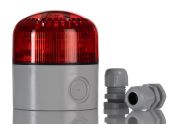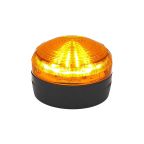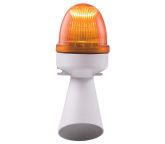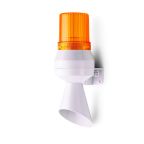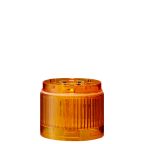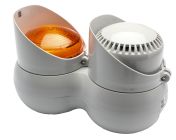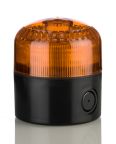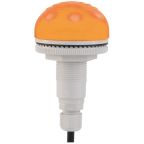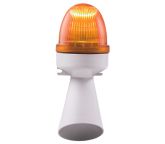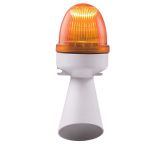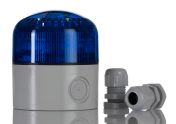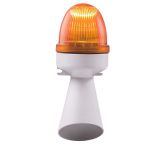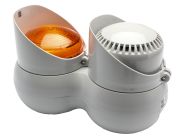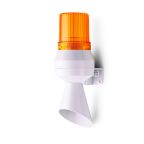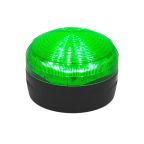Sounder Beacons
A sounder beacon is an alarm which has both audio and visual properties and is usually used in emergency situations, such as fire alarms for evacuations or on emergency vehicles to alert road users. The sounder emits a loud audible alarm to raise an alert to a hazard, while the beacon provides a clear visual alert - usually by a flashing indicator light through a coloured lens. Conventional sounder beacons are often used in commercial and industrial sectors and can be found in public places such as schools, warehouses, offices, construction sites, laboratories and industrial parks. Sounder beacons are often vital in emergency situations, such as fires, earthquakes, or other natural disasters, as a means of letting people know to evacuate an area before disaster strikes and take other precautions. Non-emergency situations can also be handled with them, e.g., controlling traffic outside or at factories and construction sites and alerting workers of any hazards that may be present there.
Fire alarm beacon
While sounders and beacons can be used separately, using them together is recommended when building fire alarm systems. This is because beacons supplement sounders by providing visual cues that also alert individuals who are hard of hearing and those in environments with high background noise to potential dangers.
EMS sounder beacon
For emergency medical services (EMS) teams implementing alarm systems in healthcare settings, sounder beacons that are more discreet and support remote maintenance is recommended. This allows staff to reduce unnecessary on-site inspections and minimise disruption in patient areas.
How do sounder beacons work?
Sounder beacons can be triggered manually, such as by pressing a button. They can also be set to activate automatically in response to certain conditions, such as the activation of a fire alarm or the detection of a gas leak. They may be powered by electricity from industrial power outlets or batteries, depending on the specific needs of the application. The audio and visual alarms in sounder beacons are integrated, making it an enhanced warning device. They can come with different tones incorporating high frequencies, low frequencies and industry-standard frequency patterns. They have different coloured lenses to give an improved warning signal. There is a wide range of alarm system equipment options available for both indoor and outdoor use. Some sounder beacons are equipped with volume control and tuneable features. Beacons may be constructed with halogen bulbs similar to those used in xenon flash tubes or LED floodlights. There are several types of sounder beacons, including flashing beacons, which use flashing lights to grab attention, and rotating beacons, which use a spinning light to create a strobe effect. Some sounder beacons also include a speaker or other audio component, which can be used to broadcast an alarm or other warning message.
What's the coverage area of a sounder beacon?
Typically, the audio range of a sounder beacon will be between 5 and 15 decibels (dB (A)) above the ambient noise level. There are many considerations when working out the coverage of a sounder beacon; for example, you'll need to take into account any noise, like the sound of people or machinery. It is important to note that sounders and beacons should be used in conjunction with other safety measures and should not be relied upon as the sole means of alerting people to potential danger. In addition, it is important to follow any evacuation or other workplace safety procedures that may be in place in the event of an emergency.
Why choose sounder beacons from RS?
At RS Malaysia, we supply a broad range of robust sounder beacons to address your needs fully. We stock combined sounder and beacon products, including Klaxon sounder beacons, Eaton sounder beacons, and alarm sounder beacons from reliable brands such as Fulleon Flashni, Klaxon, e2s, Werma, Patlite, Schneider Electric and Moflash. We also have our own versatile RS range, RS PRO, specially designed and rigorously tested to high industry standards for maximum longevity, efficiency, protection, and ease of installation.
